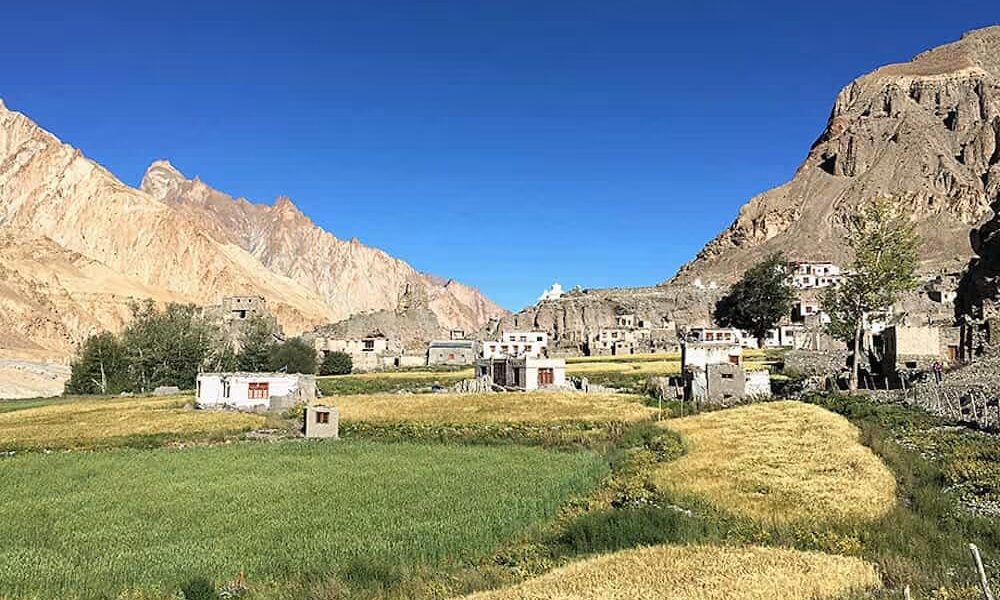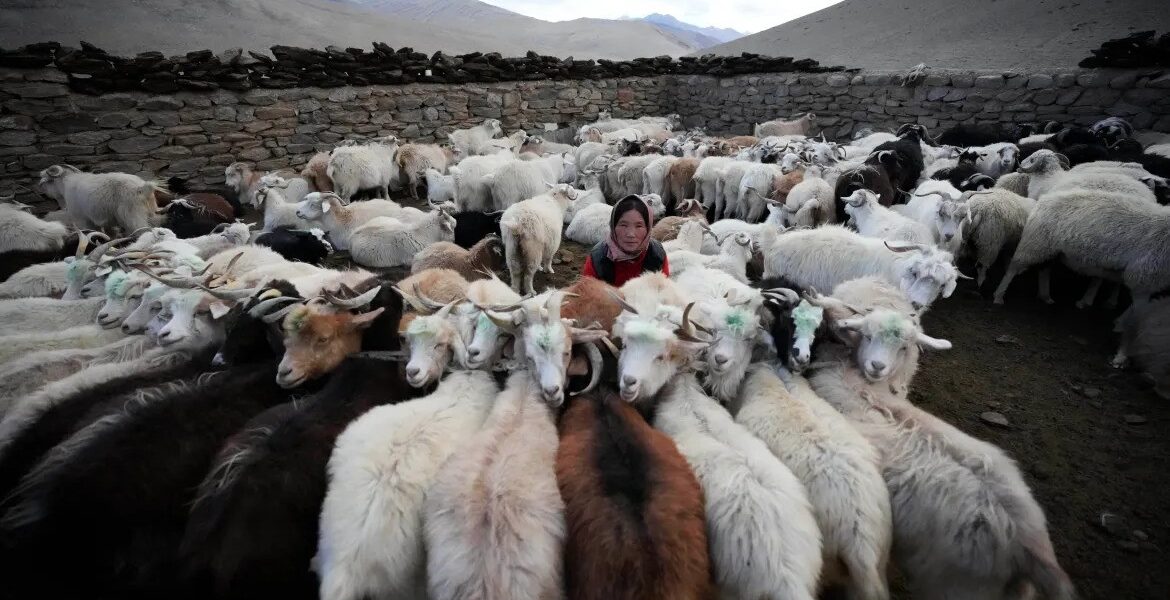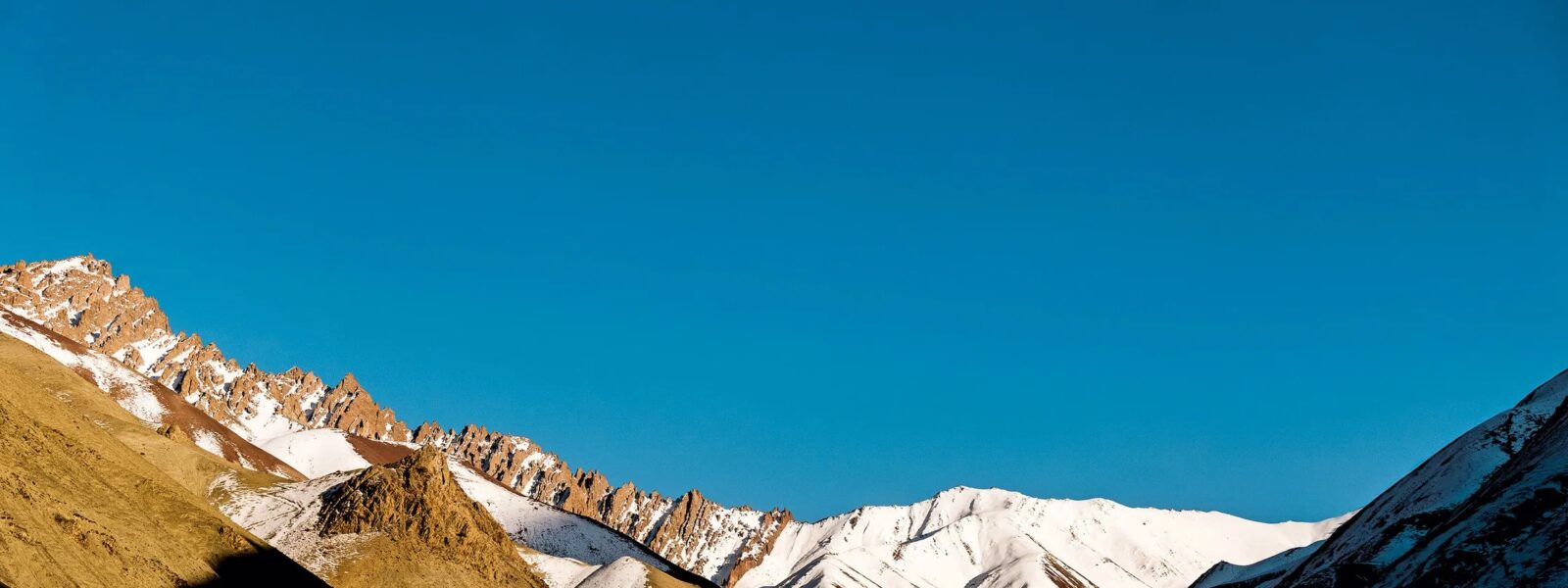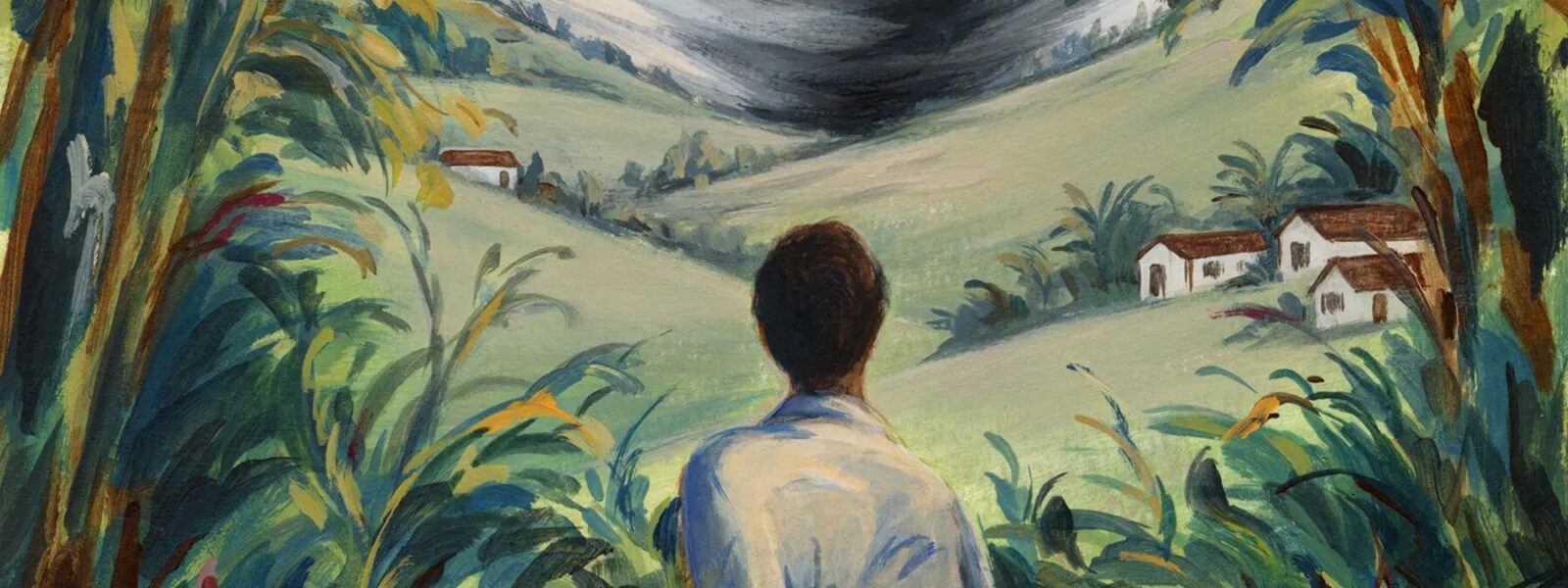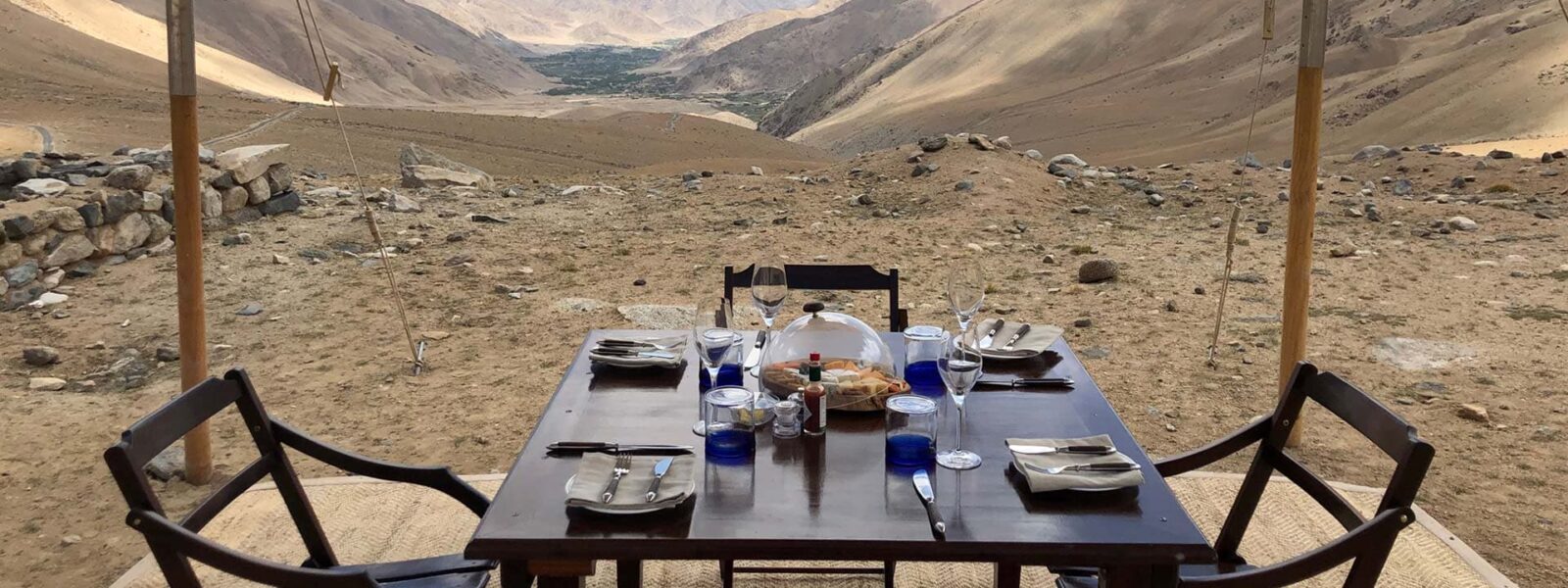Why Visit Rumbak Valley in Ladakh?
Hidden deep within the rugged heart of Hemis National Park, Rumbak Valley remains one of Ladakh’s most captivating secrets. For adventurers seeking raw landscapes, authentic village life, and the thrilling chance to spot a Snow Leopard in the wild, this valley offers a once-in-a-lifetime journey that feels worlds away from the beaten path.
Trekking through Rumbak Valley Ladakh is not just about the scenery, although the vistas are truly breathtaking. Towering peaks, crisp blue skies, and vast open spaces set the stage for an experience rooted in nature and solitude. Every twist of the trail reveals dramatic cliffs, hidden gorges, and ancient paths still used by villagers and herders today.
The valley is especially renowned as the core zone for Snow Leopard sightings Ladakh. During the winter months, these elusive big cats descend to lower altitudes, and Rumbak’s rocky outcrops and narrow valleys make it one of the best places in the world to witness them in their natural habitat. For wildlife lovers, this is more than a trek; it is an expedition into the realm of one of the planet’s rarest predators.
Beyond its famed wildlife, Rumbak also shines as a center of eco-tourism and traditional Ladakhi culture. Staying in a Rumbak homestay offers a rare window into village life that has changed little over centuries. You will share meals with local families, warm yourself by traditional wood stoves, and wake up to the sounds of mountain life, all while directly supporting sustainable tourism initiatives that benefit the community and conserve the environment.
The best time to visit Rumbak Valley depends on your interests. If trekking amidst wildflowers and green meadows is your dream, aim for summer months like July and August. However, if your goal is to track a Snow Leopard or experience the stark, silent beauty of Ladakh’s winter landscape, plan your trip between November and March, when the valley transforms into a pristine, snowy wonderland ideal for wildlife spotting.
With its perfect blend of wildlife trekking Ladakh, authentic cultural immersion, and jaw-dropping Himalayan scenery, Rumbak Valley promises an unforgettable escape. Whether you are an avid trekker, a wildlife photographer, or a traveler seeking true adventure, this hidden valley invites you to slow down, breathe deeply, and discover the magic that Ladakh holds beyond its more famous trails.

Trekking in Rumbak Valley: Routes and Tips
Trekking in Rumbak Valley is an experience that merges adventure with cultural discovery. The valley’s winding paths offer some of Ladakh’s most accessible yet profoundly beautiful trekking routes, attracting nature lovers, wildlife enthusiasts, and seekers of authentic village life. Whether you are a seasoned trekker or a beginner eager for a Himalayan adventure, Rumbak Valley warmly welcomes you.
One of the most popular trails starts from Zingchen, leading you gently into the Hemis National Park’s sanctuary of rocky ridges, deep gorges, and scattered settlements. This moderate route, perfect for acclimatizing to Ladakh’s high altitude, offers stunning views and a gradual ascent to Rumbak village itself. Along the way, keep your eyes open for blue sheep (bharal), golden eagles, and, if you are lucky, a glimpse of the elusive Snow Leopard.
The Rumbak Valley trek can easily be adapted depending on your interests and fitness level. Shorter treks focus on the immediate surroundings of Rumbak village, while more ambitious routes include ascents to passes like Ganda La (4,970m), offering panoramic views over the Zanskar and Stok ranges. Treks can vary from a two-day homestay experience to longer, more challenging multi-day expeditions connecting to other valleys within Hemis National Park.
For those interested in winter trekking routes in Rumbak Valley, the adventure takes on a different tone. Trails covered in snow demand good footwear, layers of warm clothing, and the readiness to navigate icy patches. Winter treks are best suited for those seeking snow leopard spotting tours and wildlife photography, as the valley’s sparse winter landscape makes it easier to track animal movements.
Trekking independently is possible, but many travelers choose to hire local guides, both for their invaluable knowledge of the terrain and to support the local economy. Guides also increase your chances of successful wildlife encounters and help you respect local traditions and sensitive wildlife areas. Booking a Snow Leopard trekking tour Hemis National Park often includes not only guiding services but also logistics like meals and accommodation in local homestays.
No matter the season, preparation is key. Bring high-quality trekking boots, a down jacket, thermal layers, sun protection, and a water filtration system. Altitude sickness can be a concern, so allow time for acclimatization in Leh before starting your trek. A simple first aid kit and a reliable headlamp can also make a significant difference in the remote mountain terrain.
With its blend of breathtaking natural beauty, accessible trails, and rich wildlife, trekking in Rumbak Valley is an unforgettable adventure. From short hikes to extended wildlife trekking Ladakh expeditions, this valley has something magical for every traveler willing to lace up their boots and step into the wild heart of Ladakh.
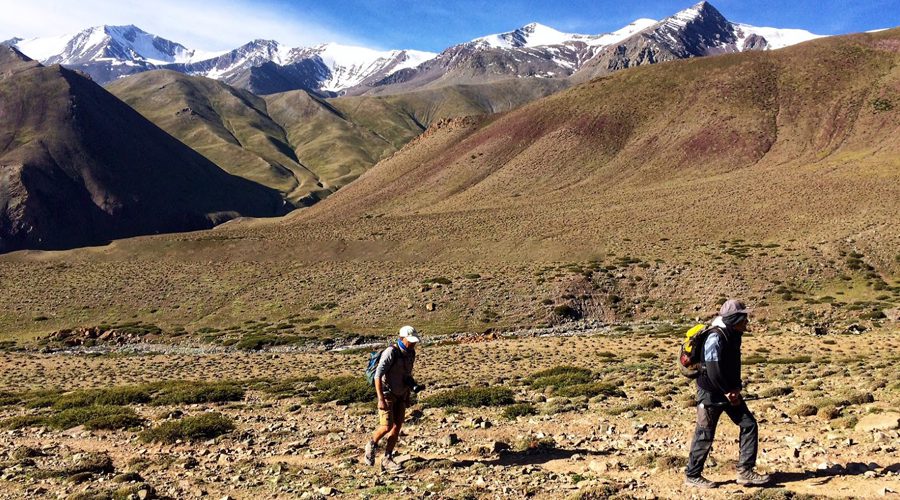
Snow Leopard Trekking Tours in Rumbak Valley
For many travelers, the main draw of Rumbak Valley is the chance to embark on a Snow Leopard trekking tour in Hemis National Park. The valley’s rugged cliffs and remote landscapes form the ideal habitat for these elusive predators, offering one of the highest success rates for sightings anywhere in the world. If spotting a Snow Leopard in the wild is on your bucket list, there is no better place to start than here.
Most Snow Leopard spotting tours are organized during the winter months, between November and March, when the animals descend to lower elevations in search of prey. This seasonal migration increases the chances of sightings dramatically. Professional wildlife trackers and expert guides, many of whom are local villagers intimately familiar with the land, lead these expeditions. Their trained eyes can spot the slightest movements against the rocky slopes, making all the difference between success and disappointment.
Tours typically begin with an overnight stay in Leh for acclimatization before transferring by jeep to Zingchen or another trailhead. From there, trekkers hike into Rumbak Valley, establishing a base in one of the village homestays or tented camps. Days are spent hiking through the valley, glassing the ridges for movement, and learning about the fragile high-altitude ecosystem that supports both predator and prey.
Expect to walk several kilometers each day at altitudes ranging from 3,500 to 4,200 meters. Patience is essential — Snow Leopard sightings are never guaranteed, and many hours may pass scanning barren hillsides before success comes. But when it happens, the reward is unforgettable: the graceful silhouette of a Snow Leopard prowling across a snowy ridge, blending seamlessly with the Himalayan landscape.
Many wildlife photography tours Ladakh winter are also centered around Rumbak, offering specialized itineraries with expert guides who understand the needs of photographers. Early morning and late afternoon light paint the mountains in stunning colors, creating extraordinary opportunities to capture these rare animals on camera.
When choosing a tour operator, look for companies committed to eco-friendly trekking in Rumbak Valley. Ethical tours minimize their environmental footprint, respect local customs, and contribute directly to snow leopard conservation tours by supporting community-based programs. Many tours also include visits to conservation projects where you can learn about the efforts to protect not just the Snow Leopard, but the entire Himalayan ecosystem.
Joining a Snow Leopard trekking tour in Rumbak Valley is more than just a wildlife adventure. It is a journey into a fragile, awe-inspiring world where nature reigns supreme and every glimpse of a rare animal feels like a precious gift from the mountains.
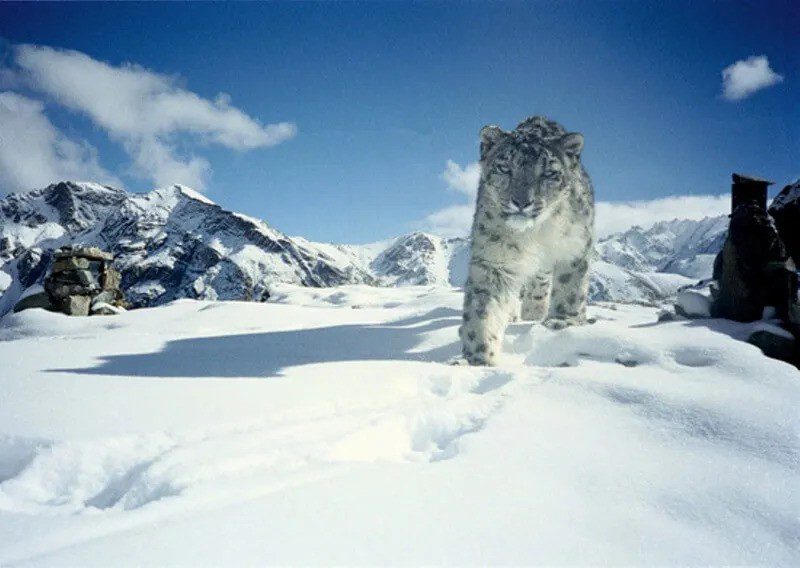
Homestays in Rumbak Village: A Cultural Experience
Trekking through Rumbak Valley is only half the adventure; staying in a traditional Ladakhi homestay completes the experience. Nestled within the mountains, Rumbak village offers a rare opportunity to connect deeply with the rhythms of local life. Opting for a Rumbak homestay not only provides comfortable shelter in the heart of Hemis National Park but also creates an authentic bridge between travelers and the resilient Ladakhi community.
Rumbak’s homestays are typically simple, cozy family homes where you will be welcomed with warm smiles and endless cups of butter tea. Rooms are basic but comfortable, featuring traditional Ladakhi furnishings, thick insulation against the cold, and spectacular views of the surrounding mountains. Staying in a Rumbak village stay is not about luxury — it is about meaningful connection, cultural exchange, and supporting local livelihoods.
Meals are a highlight of the experience. You will enjoy homemade dishes like thukpa (noodle soup), momos (dumplings), and khambir (local bread), all prepared using organic ingredients sourced from the village and nearby farms. Sitting on the kitchen floor around a wood-fired stove, sharing meals with your hosts, gives you an intimate glimpse into Ladakhi family life and traditions that have been passed down for generations.
Booking a homestay in Rumbak village can often be arranged through local tour operators, trekking agencies, or community-run organizations that ensure fair distribution of guests among families. Many homestays now participate in eco-tourism initiatives, promoting sustainable practices such as waste reduction, water conservation, and responsible wildlife viewing.
One of the most rewarding aspects of a homestay experience is knowing that your visit directly benefits the community. Income from tourism allows families to improve their homes, send children to school, and invest in local conservation projects. When you choose a sustainable homestay in Hemis National Park, you are helping to protect the natural and cultural heritage of this fragile high-altitude environment.
Cultural interactions abound — whether it is learning how to churn yak butter, helping in the fields during harvest season, or simply exchanging stories by the hearth at night. Travelers often leave Rumbak not just with photographs but with friendships, a deeper understanding of Ladakhi resilience, and a profound appreciation for life in the mountains.
Choosing a homestay over a commercial lodge transforms your trek into an immersive cultural journey. It allows you to experience Rumbak not just as a visitor, but almost as a temporary resident, part of the delicate balance between nature, tradition, and modern adaptation. In the end, it is often these quiet moments of connection that travelers remember most vividly.

How to Get to Rumbak Valley from Leh
Reaching the remote beauty of Rumbak Valley begins with your arrival in Leh, the bustling capital of Ladakh. Nestled at 3,500 meters above sea level, Leh serves as the essential gateway to all adventures in Hemis National Park. From Leh, it is relatively straightforward to reach Rumbak — but a little preparation will make your journey smooth and enjoyable.
The most common route starts with a drive from Leh to Zingchen, a small settlement that marks the beginning of the Leh to Rumbak Valley trekking guide route. The drive typically takes about an hour and a half, covering a distance of roughly 30 kilometers along paved and gravel roads. Hiring a private taxi is the most convenient option, especially if you are traveling with gear or during the colder months. Taxis can easily be arranged through your guesthouse in Leh or at the main taxi stand.
For those seeking a more economical route, shared jeeps occasionally run toward Zingchen, but their schedules are highly irregular. Another option is to take a bus toward Hemis or Martselang and arrange a pick-up at a junction, although this requires coordination and a good sense of timing. Most trekkers prefer the reliability of a hired vehicle to ensure they reach the trailhead without stress.
Once you arrive in Zingchen, your trekking adventure begins. The initial trail is gentle, following a river through a narrow gorge before gradually climbing toward Rumbak village. Depending on your pace and acclimatization level, it takes about 3 to 4 hours to reach the village on foot. If you have booked a Snow Leopard trekking tour Hemis National Park or a guided wildlife expedition, your guide will usually meet you at Zingchen and accompany you to the village.
It is important to note that entry to Hemis National Park requires a permit. Most local operators include this in the cost of organized treks, but if you are traveling independently, you can obtain the permit from the Wildlife Department Office in Leh. Always carry a copy of your identification documents and keep your permits easily accessible for checks along the way.
In winter, reaching Zingchen can be slightly more challenging due to snow and ice on the roads. Be sure to confirm road conditions ahead of time, and consider hiring a 4×4 vehicle if needed. Despite the cold, this season offers unparalleled chances for Snow Leopard sightings Ladakh, making the extra effort more than worthwhile.
Getting to Rumbak Valley is not just a transfer from one place to another; it is the start of your immersion into the wild landscapes of Ladakh. Every curve in the road, every rocky trail you follow, draws you deeper into a world where nature, culture, and adventure intertwine in unforgettable ways. Whether you are trekking independently or joining a wildlife trekking Ladakh tour, the journey to Rumbak Valley is as much a part of the adventure as the destination itself.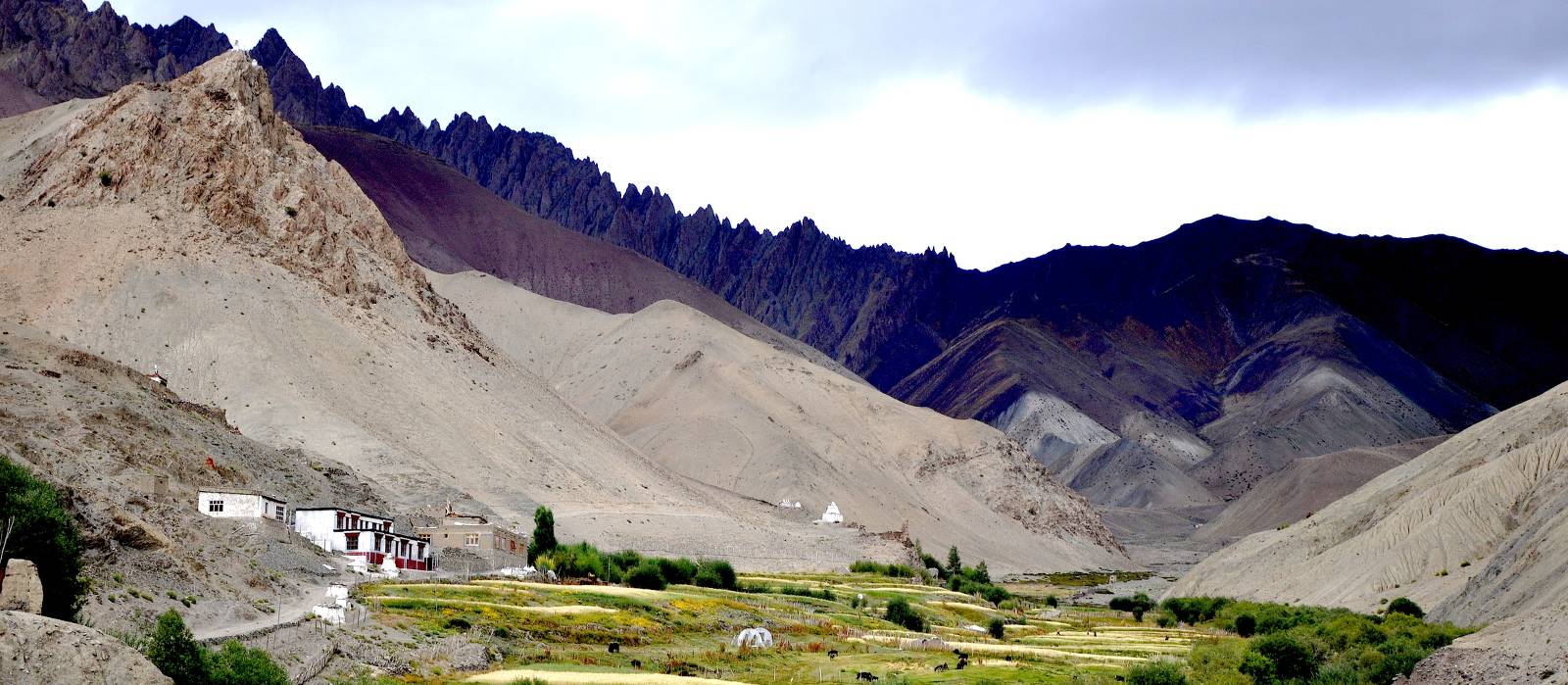
Final Tips for an Unforgettable Rumbak Valley Adventure
Before you set off to explore Rumbak Valley, a few final tips will ensure your adventure is as rewarding and seamless as possible. Trekking and wildlife viewing in Ladakh’s high-altitude wilderness demands careful preparation, respect for local customs, and a spirit of flexibility. With the right mindset and planning, your journey into the heart of Hemis National Park will become a memory you cherish for a lifetime.
First and foremost, be aware of the altitude. Leh itself sits at 3,500 meters, and trekking in Rumbak Valley often takes you above 4,000 meters. Allow at least two full days in Leh to acclimatize before beginning your trek. Stay hydrated, eat well, and ascend gradually to give your body time to adjust. Symptoms of altitude sickness can escalate quickly, so listen to your body and do not hesitate to descend if needed.
When packing, prioritize lightweight, layered clothing suitable for sudden changes in weather. Even in summer, temperatures can drop dramatically after sunset. In winter, when Snow Leopard spotting tours are most active, temperatures plummet well below freezing, and snow covers much of the trail. Good boots, thermal wear, a down jacket, gloves, and a hat are essential. Sun protection — including sunglasses, sunscreen, and lip balm — is critical year-round due to Ladakh’s high UV exposure.
If you plan to participate in a Snow Leopard trekking tour Hemis National Park or a wildlife photography tour Ladakh winter, invest in a good pair of binoculars and a camera with a strong zoom lens. Spotting a Snow Leopard often requires scanning distant cliffs and ridges, where a quality pair of optics can make all the difference.
Cultural sensitivity is just as important as physical preparation. Always ask permission before photographing local people, and dress modestly out of respect for local traditions. Homestays provide wonderful opportunities to learn about Ladakhi culture, but remember that you are a guest in someone’s home. Small gestures — such as offering to help with chores or bringing a small gift from your home country — are deeply appreciated.
Supporting eco-tourism in Rumbak Valley ensures that future generations can continue to enjoy this pristine environment. Travel with companies that prioritize responsible tourism, minimize waste by bringing reusable items, and respect the fragile ecosystems you trek through. Every small action counts toward preserving this extraordinary place.
Above all, embrace the spirit of adventure. Whether you are waiting quietly on a ridge for a Snow Leopard to appear, sharing stories with your homestay family by a warm stove, or simply watching the sunrise over snow-dusted peaks, Rumbak Valley offers moments of pure magic. Patience, respect, and openness will reward you with an experience far richer than any itinerary could promise.
Your journey to Rumbak Valley is not just about reaching a destination — it is about immersing yourself in the wild soul of Ladakh. Take your time, tread lightly, and let the mountains, the people, and the wildlife leave their indelible mark on your heart.

